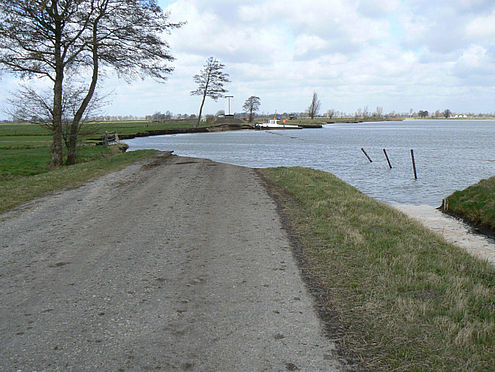Breaching
Dave Weij
Breaching is defined by Van den Berg (2002) as: "A gradual retreat of a subaqueous slope, which is steeper than the angle of repose near the top of the slope." Breaching is initiated by the formation of a steep slope. When this steep slope starts to slide, the sand starts to dilate. This dilation causes an underpressure in the pores of the sand. The pressure gradient created by this keeps the steep slope temporarily stable. The underpressure is reduced as water flows in. As water slowly flows into the soil, sand particles at the interface are released one by one.
Sand released from the slope during breaching is mixed with water and accelerates in a turbulent density flow.
The breaching process was an important production mechanism for the dredging industry. Therefore much research was devoted to this process. In recent years, however, the breaching process has lost popularity as a production mechanism in favour of trailing suction hopper dredgers and cutter suction dredgers, leading to a decrease in research on the topic.
However, breaching process can also be a cause for unwanted slope instability and failure. These failures are caused by a process called unstable breaching. In unstable breaching the erosion by the density flow is so strong that the steep slope increases in size. This process can go on for hours and cause a lot of damage.
Unstable breaching has been identified as the cause for several recent slope failures. During the nineties many failures occurred in sand production pits in the Dutch province Overijssel. WL{\textbar}Delft Hydraulics found that most failures occurred in densely packed sand. It is therefore likely that at least some of the failures were caused by unstable breaching \citep{mastbergen01}. In the sand collection pit Hooidijk, near Staphorst, a unstable breach caused failure of the slope in 2008 (See figure).
To reduce risks of unstable breach failures, we need to better understand the process. The goal of this research is to create a CFD model which can be used to gain more insight into the process.
The research is sponsored by the Stichting Speurwerk Baggertechniek (SSB), a collaboration between Van Oord and Royal Boskalis Westminster, Rijkswaterstaat, and Deltares.
